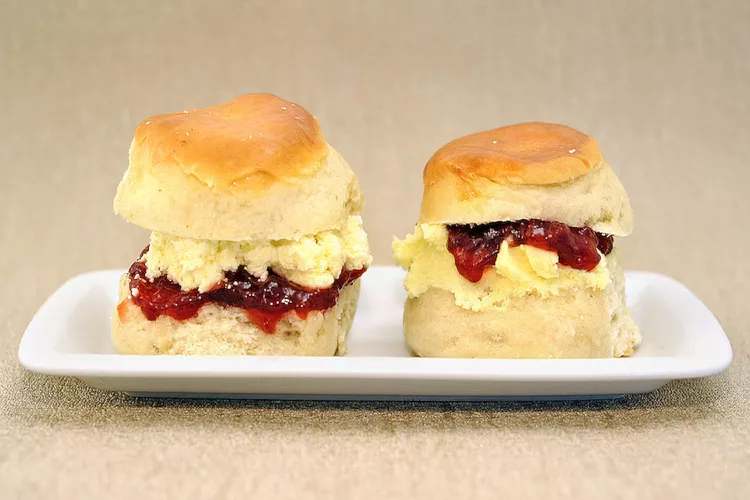English Clotted Cream: A Delectable British Tradition
English clotted cream is a quintessential part of British culinary heritage, renowned for its rich, creamy texture and indulgent flavor. This luxurious dairy product has been enjoyed for centuries, particularly in the southwestern counties of Devon and Cornwall. Let’s delve into the history, production process, and various uses of clotted cream, along with tips on how to enjoy it to the fullest.

The History of English Clotted Cream
The origins of clotted cream date back to at least the 11th century, with some sources suggesting that it was introduced to England by Phoenician traders. It became particularly popular in the counties of Devon and Cornwall, where it is an integral part of the local food culture. Today, both regions boast their own slightly different methods and fiercely debate the correct way to serve it with scones.
What is Clotted Cream?
Clotted cream is a thick, rich cream made by indirectly heating full-fat cow’s milk and then allowing it to cool slowly. This process results in the formation of “clots” or clumps of cream on the surface, giving clotted cream its distinctive texture and flavor. It is often described as having a nutty, buttery taste with a silky, smooth consistency.
The Production Process
Producing clotted cream is a time-consuming but relatively straightforward process. Here’s a step-by-step overview:
- Milk Selection: Full-fat cow’s milk is used, often fresh from local dairy farms.
- Heating: The milk is gently heated in shallow pans for several hours. Traditionally, this was done over a wood fire, but modern methods use ovens or steam baths.
- Clot Formation: As the milk heats, the cream rises to the surface and forms clots. The temperature is kept below boiling to prevent scorching.
- Cooling: After heating, the pans are allowed to cool slowly, often overnight. This step is crucial for developing the thick, creamy texture.
- Skimming: Once cooled, the clotted cream is skimmed off the surface and transferred to jars for storage.
Differences Between Devon and Cornish Clotted Cream
While both Devon and Cornwall produce clotted cream, there are slight variations:
- Devon Clotted Cream: In Devon, the milk is traditionally heated before the cream is skimmed off, resulting in a slightly different texture.
- Cornish Clotted Cream: Cornish clotted cream has a Protected Designation of Origin (PDO) status, meaning it must be made in Cornwall using Cornish milk and a specific production method. The milk is left to stand before heating, and the cream is not skimmed until after the cooling process.
Uses of Clotted Cream
Clotted cream is incredibly versatile and can be used in various ways:
- Cream Tea: The most iconic use of clotted cream is in a traditional cream tea, served with freshly baked scones, strawberry jam, and a pot of tea. There is an ongoing debate over whether to spread the jam or the cream first, known as the “Devon” or “Cornish” method.
- Desserts: Clotted cream can be dolloped on top of desserts such as pies, crumbles, and fruit tarts, adding a rich, creamy element.
- Breakfast: It can be enjoyed with pancakes, waffles, or even spread on toast for a luxurious breakfast treat.
- Cooking: Clotted cream can be incorporated into recipes for a rich and creamy texture, such as in sauces or custards.
How to Enjoy Clotted Cream
To fully appreciate clotted cream, here are a few tips:
- Temperature: Serve clotted cream at room temperature for the best texture and flavor.
- Pairings: Pair it with sweet accompaniments like jam, honey, or fresh berries to complement its richness.
- Storage: Keep clotted cream refrigerated and consume within a few days of opening for optimal freshness.
Conclusion
English clotted cream is a delectable treat that embodies the rich culinary traditions of Devon and Cornwall. Its unique production process and indulgent flavor make it a beloved component of British cuisine, particularly when enjoyed as part of a classic cream tea. Whether you’re spreading it on scones, topping your favorite dessert, or simply savoring it by the spoonful, clotted cream is a luxurious delight that’s sure to please.






